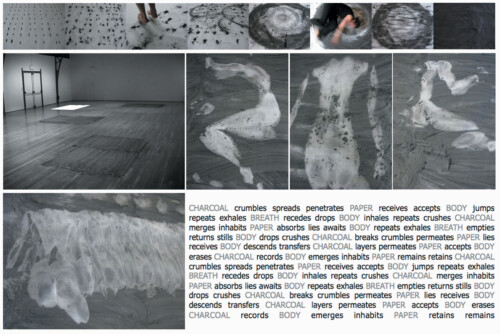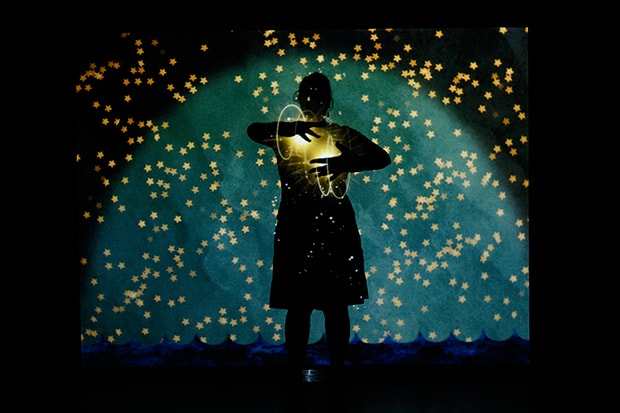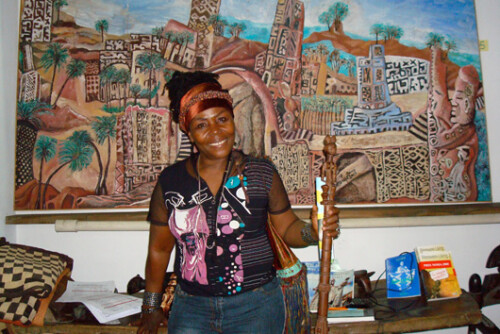Networking from Psychology to Society
Bateson relocated schizophrenia from a problem of physiology or individual subjectivity to one of communication, channels, and networks. To make clear his influence in cybernetics and communication theory, he clearly invoked concepts of systems. He argued that thinking about violence and failure in terms of homeostasis or disequilibrium might offer an alternative to an absolute and static category of normal or pathological by which to assess the dysfunctionality of a patient, a family group, or a society.
Bateson’s concept of how systems become violent through a process of schizmogenesis is illustrative of this turn from stability and pathology to channel and capacity. It also reveals how Bateson approached individual psychologies and social systems analogously. For Bateson, all systems—no matter what size or space—oscillate. However, if a system is stuck in a homeostatic repetition it may end up in disequilibrium because no new information can be entered to change the pattern of action-reaction. Cold War nuclear deterrence behavior was a classic formulation of this problem.
To consider why a system might become dangerous to itself, Bateson introduced two terms—still useful today in thinking about politics—symmetrical and asymmetrical schizmogenesis, and two concepts, “regenerative” or “degenerative,” to describe circuits of action. He took the terms regenerative and degenerative from communications theory. His case studies for asymmetrical schizmogenesis were taken from his fieldwork with the Iatmul in Papua New Guinea, and for symmetrical systems, from his work in the Balinese Highlands.
Asymmetical schizmogenesis leads to regenerative circuits or, in his language, “vicious” circuits. Bateson defines asymmetry and regeneration as a situation when A causes B causes C … increases in N causes increase in A. It is a far more complex form of feedback invoking the logic of “and then … and then … and then,” but not in a linear or automatically causal way. This feedback loop without compensatory mechanisms or change leads to intensification and increasing rates of reaction, usually towards violence. Opposing this idea, Bateson also offered the concept of degenerative circuits and symmetry. Degeneration is not a pejorative in this case. Rather, symmetrical schizmogenesis is defined as “self-correcting,” “increase in N causes a decrease in M …,” and so forth.1
It is a testimony to how far Bateson went to separate his work from any stable idea of normalcy or pathology that he clearly argued that neither system is preferable, despite the confusing terminology linked to regeneration and degeneration. The problem, he argued, was that neither symmetry nor asymmetry changed the nature of the interactions or allowed emergence and learning.
Lurking within a rather confusing formulation that merged concepts of redundancy and noise (linked to degeneration and regeneration in circuits) with ideas of communication is a basic issue of proximity and difference. But difference was now understood as a temporal separation from the moment of interaction. Bateson re-shifted a problem classically framed as one of dialectics and stability to instead focus on the system’s capacities to negotiate stimuli. Homeostasis was not a virtue for Bateson, and as a result, he wanted to focus on increasing the capacity of a system—now understood as a network of different agents engaging one another—to take in more information and stimuli and to vary its behavior. Therapy was directed against repetition, in a manner analogous to psychoanalysis, but lacking the psychoanalytic effort to turn the free association of the dream into a set narrative.2
If a half century earlier, Sigmund Freud had diagnosed schizophrenia as the result of one communicative structure—the Oedipal complex—Bateson allows these structures to take many forms, to be unmoored from a normative situation. By substituting communication for the language of pathology and psychology, and replacing performance with the representative function of language, both the work of representation and the function of illness are transformed. It is the inversion of psychosis from a pathology to an instrument for social research that makes new entities take precedent—methodology and measure. What had once been a vexing problem to be surmounted by science was now an opportunity for technical development.
The Emergence of Family Therapy
If the subject was decentered and networked to the world, then how might this affect those sciences most clearly related to subjectivity—mainly psychology and psychiatry? Bateson’s model facilitated new attitudes to treating not only individual patients, but more importantly, patients in relationship to other individuals and the environment. In 1954 a young psychiatrist, Don Jackson, gave a talk at the Palo Alto Veterans Administration Hospital. Bateson engaged him afterwards. As Jackson related “the research bug bit … From that moment on, I became more closely related to the social sciences then medical psychiatry.”3 Along with a number of other psychiatrists—particularly Jay Haley and John Weakland—involved with Bateson’s research, and who were critical to developing the aforementioned model of the double bind, the group of young psychiatrists set up the Mental Research Institute (MRI) in 1958 in Palo Alto. Here they focused on group and family therapy. Their central goal was to apply ideas of communication and cybernetics to psychiatry and psychological therapy. This work also led to the production of Alcoholics Anonymous and related addiction treatment programs.4
Jackson emphasized the centrality of thinking at a social level even if curing individual patients. He emphasized that applying social science to psychiatry would break the field from what he labeled a “monadic,” or individual-patient oriented, perspective inherited from psychoanalysis.5
Central to this socialization of psychiatry were methods of therapy that created small ecologies or networks to study patient interactions at many levels. Family therapy was one of the critical forms first developed by influence of Bateson’s work in the late 1950s at MRI.6
Family therapy reframed disease away from individual subjects to interactions between subjects and objects. In his major manual for psychological training introducing communication-based techniques, Jackson recounted a number of cases from the clinic. He related, for example, the story of a young woman who bore a child out of wedlock and was also diagnosed with schizophrenia. Her parents wanted to care for the child due to their concerns over her health problems. Their major complaint involved her seemingly characteristic inability to make decisions to the point of pathology. Everyday actions such as choosing what to wear became obsessive and could take the whole day, preventing other activities and curtailing her ability to deal with other people. The initial clinical notes indicated that she appeared to suffer an inability to direct desire toward any particular object, impacting her ability to make choices to the point of affective disruption in relationality to other human beings. Her parents argued that this made her unable to care for a small child.
Normally, Jackson argued, if the patient was treated alone according to the conventions of the mid-1960s when he wrote, psychoanalytic therapy would only focus on probing personal links to the problem, histories of sexual behavior and violence, and so forth. Behavioral therapeutic intervention, on the other hand, would have been strictly physiological, medicating the patient with little concern for narrative or communication and focusing solely on physical outcomes and changes in action. Counter to these two opposing models of therapy—one psychological and one physiological—Jackson argued that ecological approaches open a practical space between raw medical and pharmaceutical intervention and strictly individual psychological and talk therapy.
Returning to the case of the affectively disturbed schizophrenic, Jackson explained that when the parents were bought into the session together, it became evident that they were excessively decisive, to the point of fault. The patient’s withdrawal must be understood as a compensatory mechanism for the parents’ over-performance of assertion. When the parents were studied separately, however, it became evident that they, too, were indecisive over many things, particularly their daughter’s course of action and treatment. Taken together it might be said that the parents’ performance to the daughter concealed and transferred their personal vacillations and insecurities onto the patient. The situation could then be reconsidered and therapeutic options explored that accounted for the whole scenario.
Documentary Methods
This was not only a frame shift in what constituted the fundamental unit of psychological intervention, but also a transformation in documentary practices. A number of groups at MRI adopted methods analogous to Bateson’s work of filming in Bali, applying film, then videotape to therapy for replay and analysis. The introduction of film through two-way mirrors and by having cameras present in sessions refocused psychiatric assessment and therapeutic concern on new details. For example, therapists focused on experimenting and reflexively evaluating the timing of the lengths of the sessions. The tempo and cadence of conversation in the session, its form, became as much an object of study as the specific content of discussion between patients and doctors. The very feedback interaction both in gesture and language between the analyst and analysand was studied as much as the specific etiologies of any pathology.
Jackson explicitly analyzed the possible dependencies developing in the session between the analyst and the analysand. Reflexively, the communication paradigm made the therapy session itself, in his words, a “double bind” where the two figures of the patient and the therapist were taught to remain pathological to continue the interaction. This bind, arguably impossible for psychoanalysis to fully recognize, Jackson argued, could be made visible and therefore reprogrammable through the self-reflexive externality of the recording systems.7 Analysis itself became both the experimental set-up and the self-referential object of intervention and study.
This self-referential world without interiority or exteriority posed problems for the older histories of medicine and psychology with which it interacted. Jackson confessed to a concern with the psychoanalytic theories that inform but also must be split from in order to appropriate a model of ecology and communication. He argued that it was Freud who first introduced the family with little Hans, but that psychoanalysis was still focused on the individual. More importantly, Jackson’s regular invocation of analysis as “monadic” but also “inspiring” demonstrated an in-built tension within these new methods. “Just as events point to increasing union between psychiatry, the family, and social science, there will be no such union in the main current of psychoanalysis for some time to come,” Jackson lamented. The reason is that analysis often does a “disservice” to group and ecological therapies because family work is largely still couched in terms of the individual, and, even more importantly, analysts cannot handle more then one “transference” at a time. By implication, Jackson hints at a discomfort, one of proximities and stable identities. He appeared to imply that if too many individuals projected onto the analyst, the analyst would be overwhelmed, and perhaps unable to retain control of the situation or of his or her own subjectivity.8
What threatens the analyst’s position, Jackson believed, could be reconciled by new methods in the social and human sciences. Analytic and medical authority, which was now threatened by the emergence of ecological approaches, instead refocused attention on data analysis and collection as a new virtue and mark of objectivity. A lot of data, reflexively analyzed, Jackson argued, might facilitate control of the situation in a way that direct observation could not.8
But the sentiments of therapists demonstrated a set of concerns about dangerous proximities in both time and space between the bodies and minds of doctors and patients. If the therapist was now part of the system, then what was the therapist’s relationship to the analysand? In psychoanalysis, which provided the bedrock of Bateson and Mead’s research and still informed the practices at MRI, psychotic ailments had long provoked anxiety about the authority of the analyst over the analysand. Psychosis posed the possibility that psychoanalysis and transference were similar in redrawing the separations between subjects. If psychoanalysis as a method transgressed the boundaries of any individual ego, then its claims to scientific authority and distanced observation were in question. In fact, both critics antagonistic and amenable to Freud have noted that psychosis troubled him, and was never his favored object of research. In particular, schizophrenia—whose paranoid etiology is that of a falsely isolated subject under attack from the environment and external enemies—provoked anxious concern. There is something uncanny in the suffering of the paranoiac and in the efforts of scientists, politicians, and lawmakers to assert the absolute truth and inviolability of their models.9
The discourses of schizophrenia give evidence of a residual anxiety within psychiatry and the human sciences about proximity and authority between bodies, subjects, and technologies. Cybernetic reformulations of mind—whether therapeutic or computational—continued to be plagued by older claims of truth, identity, and spatiality that are incommensurable, or merely incapable of being articulated as concerns within this new regime.
- Bateson 2000 [1972]: 109. [↩]
- Don D. Jackson, Therapy, Communication, and Change (Palo Alto: Science and Behavior Books, 1968) 164-67, 263. [↩]
- Jackson 1968: v. [↩]
- Mental Research Institute, “Mri: Interactional Therapy, Training and Research,” Mental Research Institute 16 Dec. 2011. [↩]
- Jackson 1968: 262-64. [↩]
- Paul Watzlawick, Pragmatics of Human Communication; a Study of Interactional Patterns, Pathologies, and Paradoxes, eds. Don D. Jackson and Janet Beavin Bavelas (New York: Norton, 1967). [↩]
- Jackson 1968: 130-32; Jurgen Ruesch, Communication: the Social Matrix of Psychiatry, ed. Gregory Bateson (New York: Norton, 1951); Jurgen Ruesch, Disturbed Communication (New York: Norton, 1957). [↩]
- Jackson 1968: 130-35. [↩] [↩]
- Eric Santner, My Own Private Germany (Princeton: Princeton UP, 1996). [↩]






